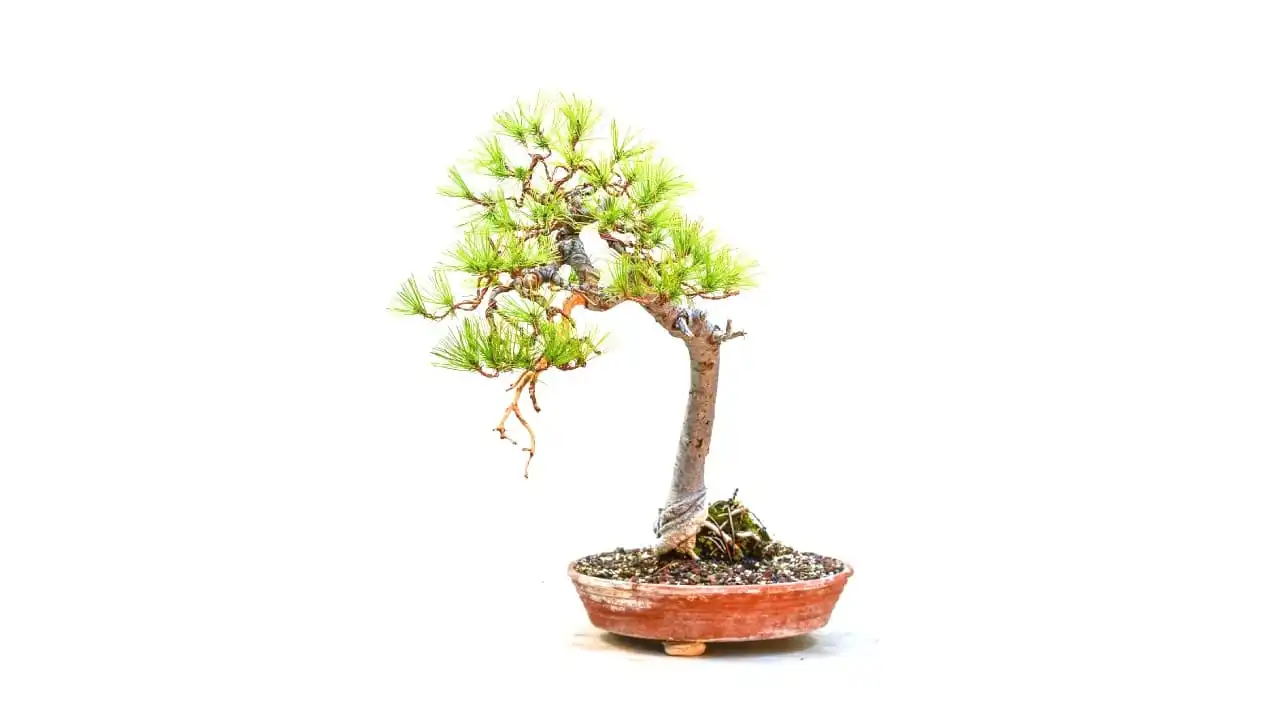Enter the Aleppo Pine, scientifically dubbed Pinus Halepensis, a pine variety deeply rooted in the Mediterranean’s embrace. Revered for its robustness, versatility, and ecological contributions, this article embarks on an exploration of the Aleppo Pine’s inception, traits, environmental significance, cultural and economic roles, management methodologies, and forthcoming avenues.
Introduction
In the vast expanse of the Mediterranean, the Aleppo Pine reigns supreme, known colloquially as the Jerusalem Pine or Mediterranean Pine. Its resilience against the harshest of environments has made it a stalwart presence, drawing admiration for generations owing to its multifaceted utility and ecological significance.
Quick Overview
| Common Name | Aleppo Pine, Jerusalem Pine |
| Scientific Name | Pinus Halepensis |
| Sun Exposure | Full Sun |
| Soil Type | Loamy, Sandy |
| Soil pH | Acidic, Neutral, Alkaline |
| Family | Pinaceae |
| Mature Size | Up to 20 to 50 Ft. Tall, 20 Ft. Wide |
| Plant Type | Evergreen, Tree |
| Native Area | Mediterranean |
Origin and Distribution
Historical Significance
The historical footprint of the Aleppo Pine is profound, tracing back to ancient civilizations like the Phoenicians and Greeks. Revered for its robust timber and fragrant resin, this species finds mention in historical chronicles, symbolizing endurance and utility.
Geographical Distribution
Originating in the Mediterranean basin, the Pinus Halepensis has traversed continents, establishing its presence in North Africa, Southern Europe, and parts of the Middle East. Its remarkable adaptability to diverse soil compositions and climates has facilitated its expansive dispersion.
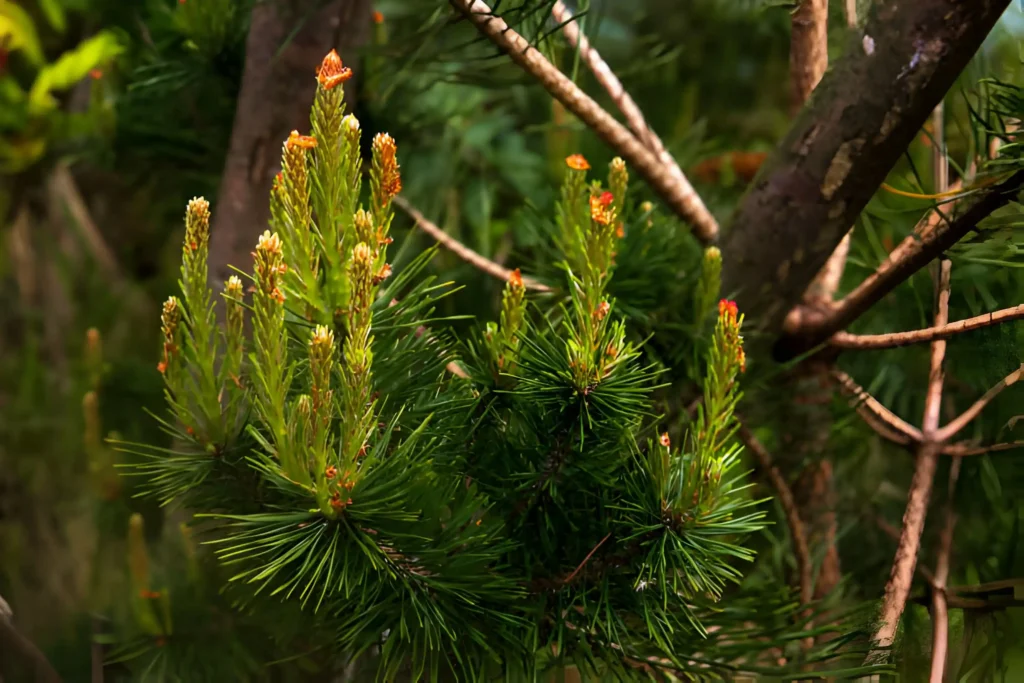
Read Me – Cherry Tree Bonsai🌱: Best Way To Care And Grow
Caring: Nurturing for Your Aleppo Pine
Aleppo Pine, like any green companion, thrives when showered with care and attention. Providing the right care ensures that your pine stands tall, exuding vitality and beauty. Let’s delve into the essential aspects of caring for your Aleppo Pine:
Sunshine Spa:
Aleppo Pine loves a good sunbath. Place it in an area that receives ample sunlight, preferably six to eight hours a day. This ensures robust growth and a happy tree.
Hydration Station:
Just like us, Aleppo Pine enjoys a good drink. Water the tree consistently, keeping the soil evenly moist. However, be mindful not to overwater, as Aleppo Pine dislikes soggy feet.
Feeding Frenzy:
Treat your pine to a nutritious meal. Use a balanced fertilizer during the growing season to provide the necessary nutrients for lush foliage and healthy growth.
Pruning Perfection:
Give your Pinus Halepensis a stylish haircut. Prune dead or damaged branches to maintain its shape and encourage new growth. Be cautious not to over-prune, as balance is key.
Winter Warmth:
Protect your pine from chilly temperatures. While Aleppo Pine is hardy, providing a layer of mulch around the base helps insulate the roots during winter.
Disease Detective:
Keep an eye out for any signs of diseases or pests. Early detection allows for swift action. Regularly inspect the needles and branches to ensure your pine stays pest-free.
Rejuvenation Ritual:
Give your Aleppo Pine a spa day now and then. Spritz the needles with water to create a humid environment, especially if you live in a dry climate.
Caring for your Pinus Halepensis is not just a routine; it’s a commitment to nurturing a living, breathing marvel of nature. With the right care, your pine becomes a testament to the harmony between humans and the natural world.
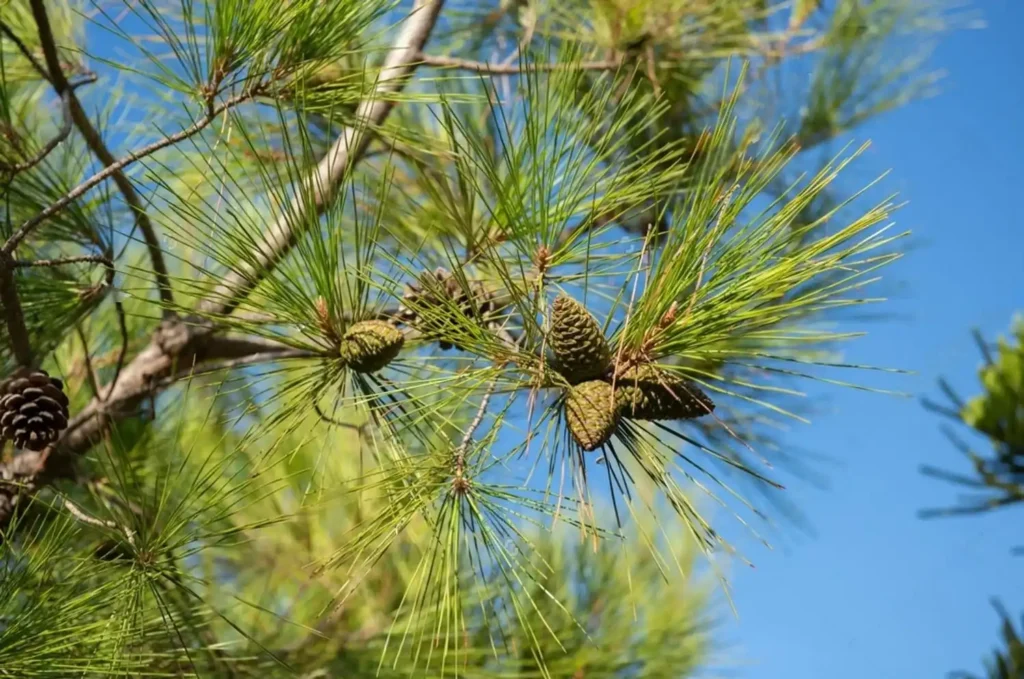
Propagating: Cultivating Your Blooming Tribe
A. Growing Your Pine Family
Propagating Aleppo Pine involves expanding your green family by creating new trees from existing ones. It’s like giving your favorite plant the chance to have offspring. Here’s a simple guide on how to propagate Aleppo Pine:
- Choose the Right Time: The best time to propagate Aleppo Pine is during the spring when the tree is entering a phase of active growth. This increases the chances of successful propagation.
- Select Healthy Branches: Look for healthy branches that are flexible but not too young. Choose sections that have a good balance of new growth and mature wood.
- Prepare the Cuttings: Using clean and sharp pruning shears, take cuttings that are around 6 to 8 inches long. Ensure each cutting has at least one set of needles at the top.
- Remove Lower Needles: Strip away the needles from the lower part of the cutting, leaving a bare stem. This is the section that will be inserted into the soil.
- Apply Rooting Hormone (Optional): While not mandatory, applying a rooting hormone to the cut end can encourage faster and more robust root development.
- Plant in Well-Draining Soil: Use a well-draining soil mix to plant the cuttings. Make a hole using a stick or your finger and insert the cutting into the soil, ensuring it’s firmly in place.
- Provide Adequate Moisture: Keep the soil consistently moist but not waterlogged. Using a misting spray can help maintain humidity around the cuttings.
- Place in Indirect Light: Position the planted cuttings in an area with indirect sunlight. Too much direct sunlight can stress the cuttings, so finding a balance is key.
- Patience is Key: It takes time for the cuttings to develop roots. Be patient and monitor their progress. Once you notice new growth, it’s a sign that roots are forming.
- Transplanting: Once the new plants have established roots, they can be carefully transplanted into larger pots or directly into the ground.
Propagating Aleppo Pine can be a rewarding experience, allowing you to share the beauty of this tree with others and contribute to its conservation.
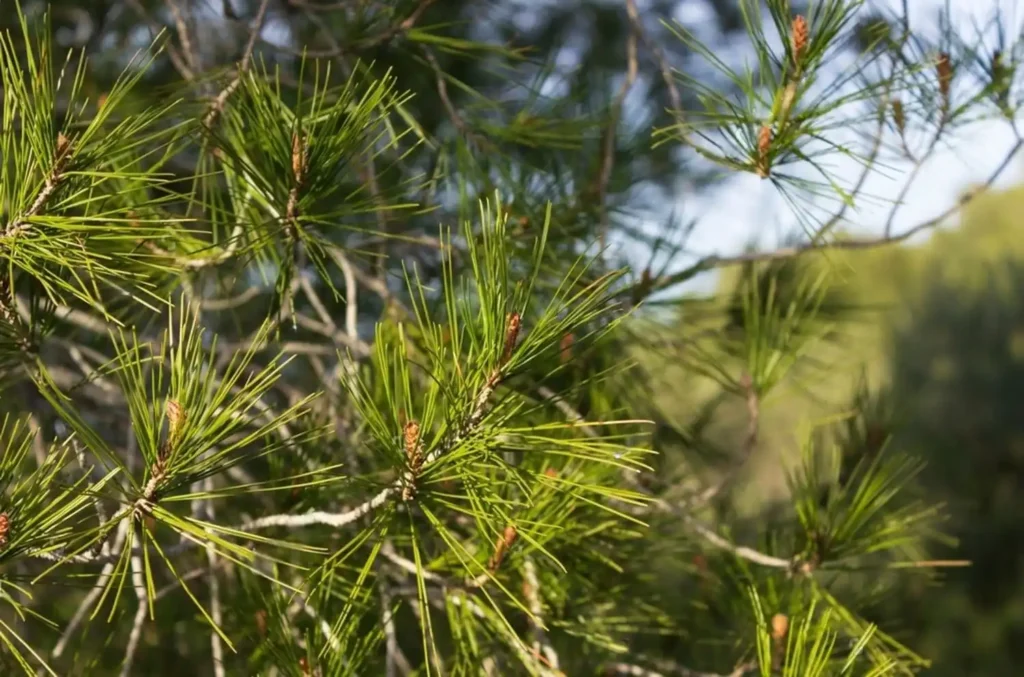
Pests & Diseases: Safeguarding Your Aleppo Pine
A. Recognizing Unwanted Visitors
Aleppo Pine, like any green superstar, has its fair share of unwanted guests. Understanding and identifying these pests is crucial for maintaining the health of your tree. Here are some common troublemakers:
Pine Bark Beetles
These tiny beetles might seem harmless, but they can wreak havoc on Aleppo Pine. Look out for small holes in the bark and sawdust-like material around the base.
Pine Processionary Caterpillars
As cute as caterpillars may seem, these guys can strip needles and cause defoliation. Keep an eye out for silk nests in the branches.
Scale Insects
These sneaky insects latch onto the needles and suck out the sap, weakening the tree over time. Check for small, oval-shaped bumps on the needles.
Aphids
Tiny and often hard to spot, aphids can cluster on Aleppo Pine needles. Keep an eye out for sticky residue, a telltale sign of aphid presence.
B. Natural Ways to Keep the Pests Away
Now that you know your foes, let’s talk about how to give them the boot without harmful chemicals. Here are some eco-friendly methods to keep your Aleppo Pine pest-free:
Beneficial Insects
Introduce ladybugs, lacewings, or predatory beetles to feast on the pests. Nature’s own pest control!
Neem Oil
A natural oil derived from neem trees, neem oil disrupts the feeding and reproduction of pests. Mix it with water and spray it on your tree.
Pruning
Regularly prune affected branches to remove pest-infested areas. Just be sure to do it responsibly to avoid stressing the tree.
Healthy Soil Practices
A healthy tree is a resistant tree. Ensure good soil drainage, proper watering, and adequate sunlight to keep your Aleppo Pine robust.
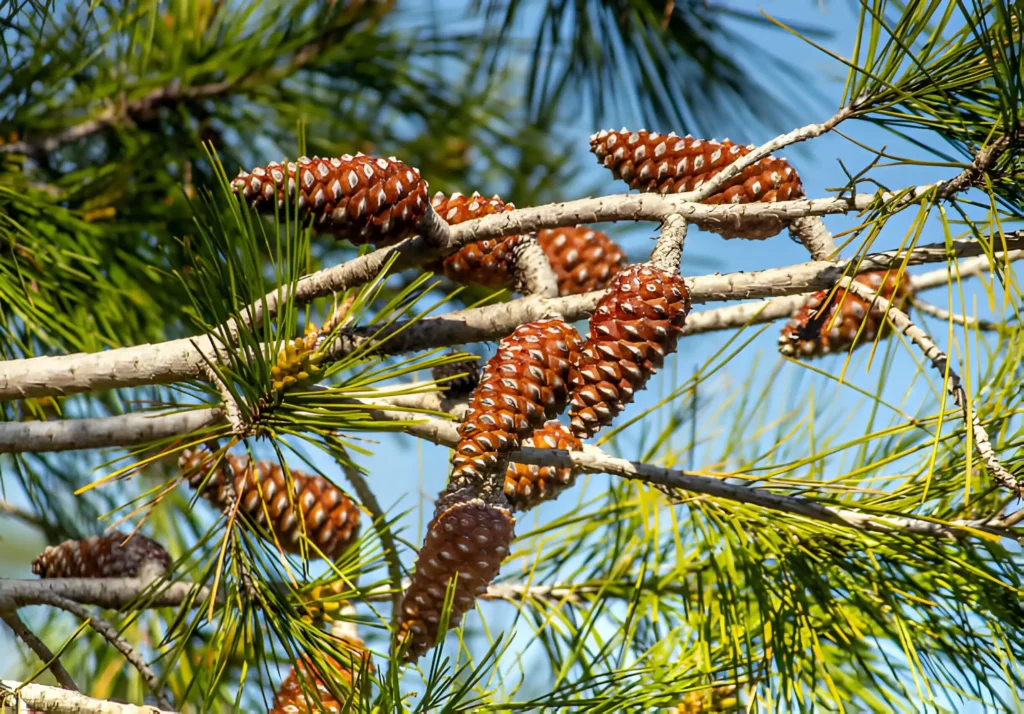
Common Problems: Everyday Issues with Your Plants
A. Issues You Might Encounter
Aleppo Pine, like any other living organism, can face its fair share of challenges. Knowing the common problems that might arise in caring for these magnificent trees is key to ensuring their well-being. Here’s a rundown of potential hurdles you might encounter:
- Needle Browning:
- Issue: Browning or yellowing of needles.
- Causes: Drought stress, soil compaction, or nutrient deficiencies.
- Solution: Ensure proper watering, maintain well-draining soil, and provide necessary nutrients.
- Pest Infestation:
- Issue: Invasion by pests like aphids or scales.
- Causes: Environmental stress or lack of natural predators.
- Solution: Introduce beneficial insects, use neem oil, or apply natural insecticides.
- Root Rot:
- Issue: Fungal infection leading to root decay.
- Causes: Overwatering or poorly draining soil.
- Solution: Adjust watering practices, improve soil drainage, and consider fungicidal treatments.
- Winter Burn:
- Issue: Browning or damage from cold winter winds.
- Causes: Insufficient winter watering or harsh weather conditions.
- Solution: Mulch around the base, provide winter watering, and shield from wind.
- Drought Stress:
- Issue: Signs of dehydration, including wilted or dry needles.
- Causes: Inadequate water supply, especially during hot periods.
- Solution: Increase watering frequency during dry spells, ensuring the soil remains consistently moist.
B. Easy Fixes for a Healthy Aleppo Pine
Encountering problems with your Aleppo Pine doesn’t have to be a headache. Addressing these issues promptly with simple fixes can help keep your tree in top-notch condition:
- Regular Inspections:
- Conduct regular inspections of your Aleppo Pine to catch issues early.
- Promptly remove any dead or diseased branches.
- Proper Watering:
- Adjust your watering schedule based on the season and weather conditions.
- Use a soaker hose to provide deep, consistent moisture.
- Adequate Nutrition:
- Implement a fertilization schedule using a balanced, slow-release fertilizer.
- Monitor nutrient levels and adjust accordingly.
- Natural Pest Control:
- Encourage natural predators like ladybugs to keep pest populations in check.
- Use insecticidal soap or neem oil as eco-friendly solutions.
- Optimal Soil Conditions:
- Ensure well-draining soil to prevent waterlogged conditions.
- Add organic matter to improve soil structure.
Remember, a proactive approach to tree care, coupled with a keen eye for signs of distress, goes a long way in maintaining the health and vitality of your Aleppo Pine.
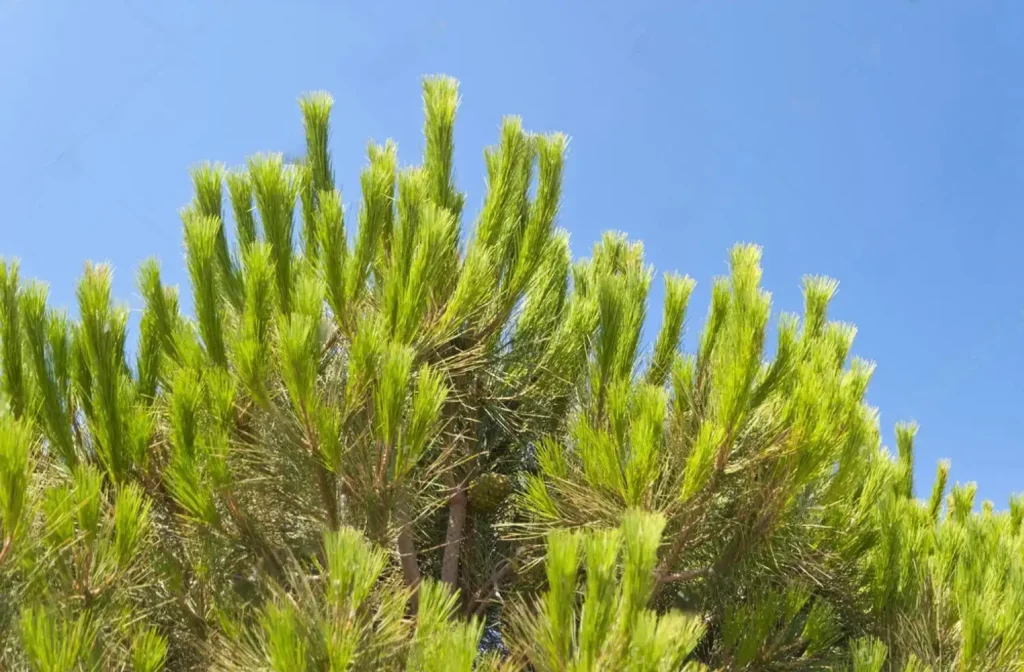
FAQs: Frequently Asked Questions
How do I care for my Aleppo Pine?
A1: Caring for your Aleppo Pine involves providing it with well-drained soil, ample sunlight, and regular watering. Ensure the soil is slightly acidic, and during dry spells, water deeply. Prune dead or damaged branches, and consider mulching to retain moisture.
Can I propagate Aleppo Pine at home?
A2: Absolutely! Propagating Aleppo Pine can be a rewarding experience. Collect seeds from mature cones, sow them in well-draining soil, and maintain a consistent watering schedule. With patience, you can witness the growth of new Aleppo Pine saplings.
When should I repot my Aleppo Pine?
A3: Repotting is crucial when your Aleppo Pine outgrows its current container or when the soil becomes depleted. Spring is generally the best time for repotting. Gently remove the tree from its pot, prune the roots if necessary, and transfer it to fresh, nutrient-rich soil.
What pests and diseases should I watch out for?
A4: Aleppo Pines can face challenges from pests like scales and aphids. Regularly inspect your tree for any signs of infestation. Regarding diseases, keep an eye out for needle blight and pine wilt. Prompt action, such as applying appropriate insecticides or fungicides, can help manage these issues.
What are common problems that Aleppo Pines encounter?
A5: Aleppo Pines may experience issues like browning needles, which can result from drought stress or pests. Another common problem is the development of bare patches in the canopy, often caused by fungal infections. Proper watering, pest management, and timely pruning can address these concerns.

